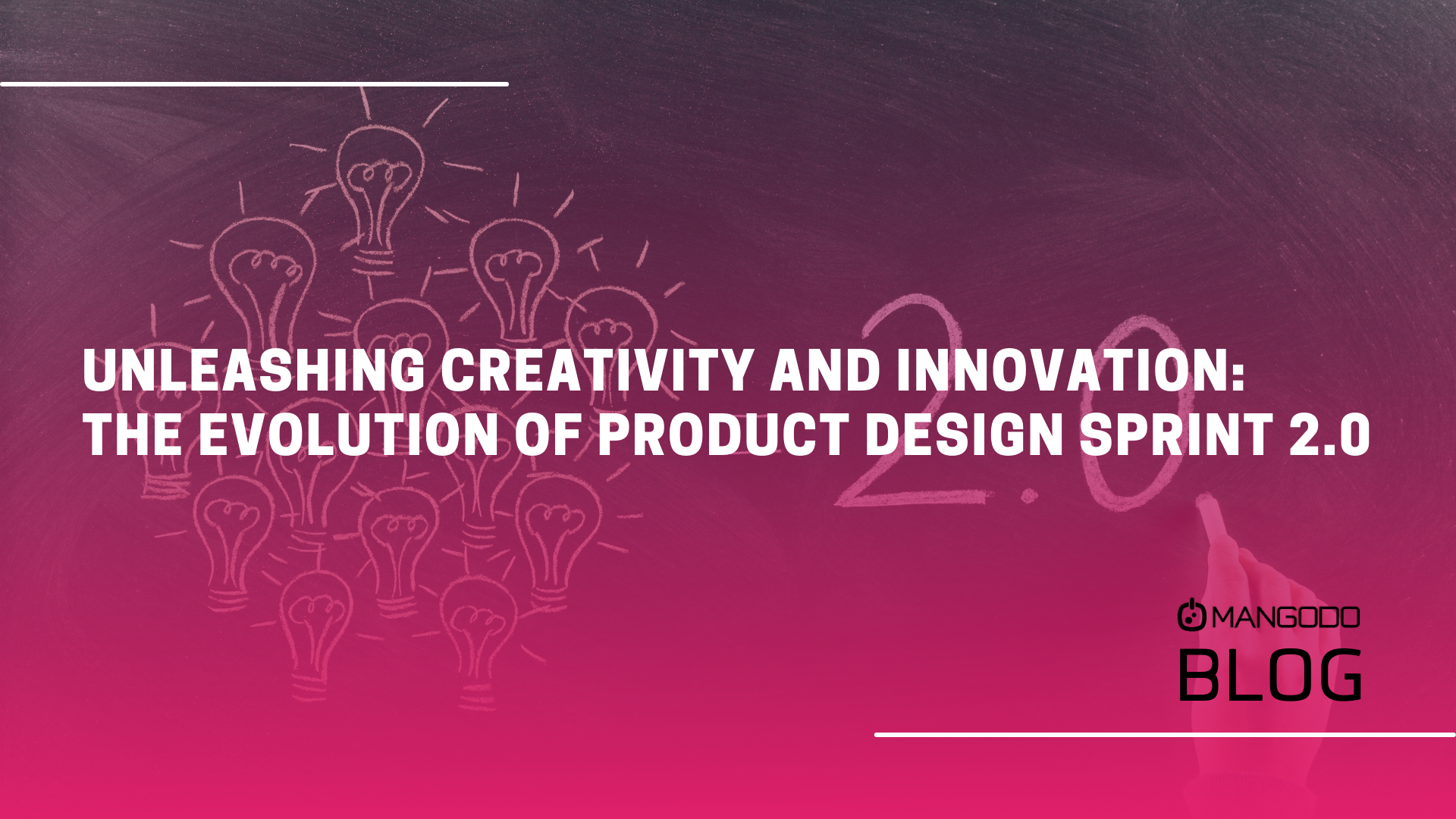Unleashing Creativity and Innovation: The Evolution of Product Design Sprint 2.0
In the fast-paced world of product development, it's crucial to have a streamlined process that fosters creativity, teamwork, and efficient problem-solving. Enter the Product Design Sprint 2.0 (PD2.0), a refined and evolved version of the original Design Sprint framework. In this blog post, we'll explore what PD2.0 is, how it works, and why it has become a game-changer in the world of product design and innovation.
The Origin of Design Sprints
The concept of Design Sprints was popularized by Jake Knapp at Google Ventures (GV), now called GV. It was introduced as a five-day framework aimed at solving critical business challenges through design, prototyping, and user testing. Design Sprints were initially designed to speed up the product development process while ensuring that the end product was user-centric and aligned with the company's goals.
Introducing Product Design Sprint 2.0
PD2.0 builds upon the foundation of the traditional Design Sprint while incorporating key refinements to make the process more effective and adaptable to a variety of scenarios. Here are some of the core components and improvements that define PD2.0:
-
Flexible Timeframe: While the original Design Sprint was typically a five-day process, PD2.0 offers greater flexibility. Teams can choose a timeframe that suits their specific needs, whether it's a condensed two-day sprint or an extended version spanning several weeks.
-
Remote Collaboration: PD2.0 has adapted seamlessly to the rise of remote work. Teams can now conduct Design Sprints online, enabling global collaboration without geographical limitations.
-
Customizable Exercises: PD2.0 offers a toolkit of exercises and activities that teams can select based on their project requirements. This flexibility allows teams to tailor the sprint to their unique challenges and goals.
-
Continuous Iteration: While the traditional Design Sprint focused on a single problem and solution, PD2.0 encourages continuous iteration. Teams can revisit and refine their solutions, adapting to changing circumstances and feedback.
-
Integration with Agile: PD2.0 can be seamlessly integrated into Agile development processes. It allows for the rapid testing of ideas and prototypes, reducing the risk of costly development mistakes.
How Product Design Sprint 2.0 Works
PD2.0 retains the foundational structure of the original Design Sprint but adds new layers of flexibility and customization:
-
Understand: In this phase, teams gather information about the challenge they are tackling. They identify key stakeholders, review existing data, and set specific goals for the sprint.
-
Diverge: Teams generate a wide range of ideas and solutions. They use various brainstorming and creativity exercises to explore different possibilities and approaches.
-
Converge: Here, teams evaluate the generated ideas and converge on a select few to move forward. They create a shared vision and understanding of the chosen solution.
-
Prototype: Teams create a prototype of their solution, whether it's a physical product, a digital interface, or a service concept. This prototype is a tangible representation of their idea.
-
Test: The final phase involves testing the prototype with real users or stakeholders. Teams gather valuable feedback that helps refine and improve their solution.
Why PD2.0 Matters
Product Design Sprint 2.0 is more than just a process; it's a mindset that encourages innovation, adaptability, and continuous improvement. Here's why it matters:
-
Faster Innovation: PD2.0 accelerates the innovation process, allowing companies to respond quickly to changing market demands and stay ahead of the competition.
-
Greater Flexibility: The framework's flexibility means it can be applied to various industries and challenges, making it a valuable tool for businesses of all types and sizes.
-
Remote Collaboration: The ability to conduct PD2.0 sprints remotely enhances accessibility and inclusivity, making it easier for teams worldwide to collaborate on innovative solutions.
-
Improved User-Centricity: PD2.0's focus on user testing ensures that the final product is designed with the end-users in mind, increasing the likelihood of success in the market.
Product Design Sprint 2.0 represents a significant evolution in the field of product design and innovation. Its flexible, user-centric approach, combined with the adaptability to remote work, makes it a valuable tool for businesses looking to stay agile, creative, and competitive in today's rapidly changing world. Whether you're a startup looking to launch a new product or an established company seeking to revitalize your offerings, PD2.0 can guide you towards innovative and user-focused solutions.
